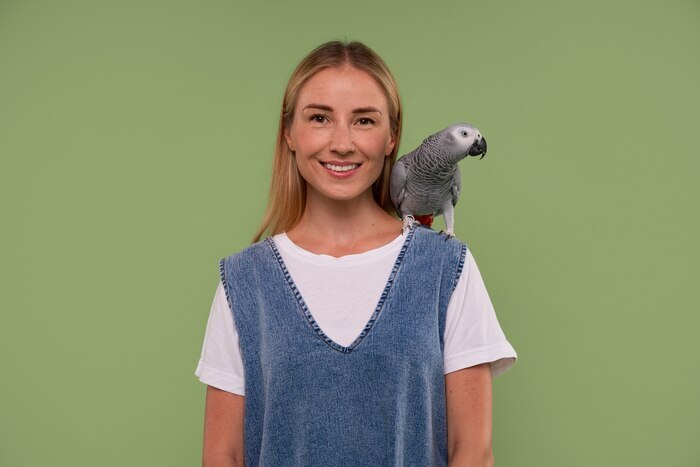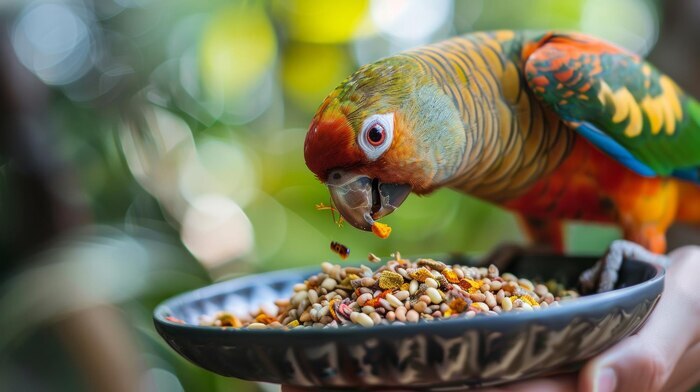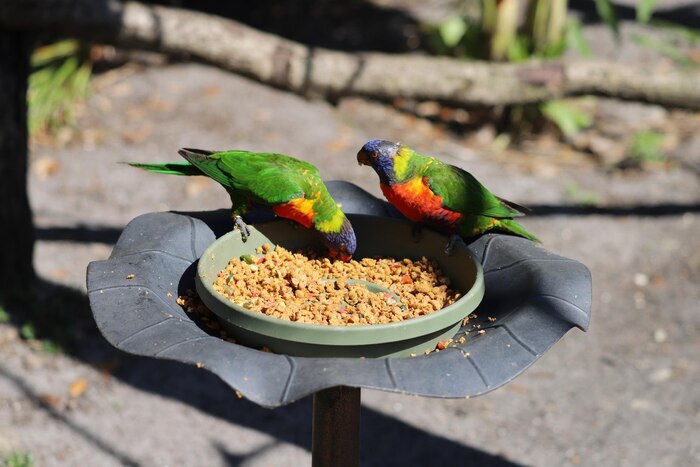
Create an Account
Create an account for powerful AI tools, award-winning courses, and access to our vibrant community.
Already have an account?
Vetafarm’s pellets should provide the necessary caloric intake your birds need in one day.

Birds are highly intelligent animals that in Australia, account for around 10% of all pets found in our households. And there’s no wonder why. Pet birds like Australian parrots, budgies or cockatoos are highly adaptable companions, that can form real, genuine connections with our family, and who live significantly longer than other types of small pets like hamsters or guinea pigs.
Their maintenance is less complex than that of dogs or cats, the annual vet costs for a pet bird will probably be nonexistent, and their gentle nature and lack of aggressiveness transform them into fantastic companions for families with small children. But, in order for your pet bird to develop nicely both physically and mentally, you will first of all need to prioritise its dietary requirements. Birds are not exactly the pickiest of eaters, but different species will present different nutritional requirements, which would hopefully be addressed by going for the right bird food.
What should you look for? Well, first of all, you should consider going for bird pellets made by renowned bird food manufacturers like Vetafarm. But on top of pellets, your small but adorable feathered friend will also require around 10% of its diet to come in the form of seeds, and around 20% of its daily food intake to consist of vegetables like bell pepper, carrots or spinach. Fruits can also account for around 5% of your bird’s calorie consumption, but you should be wary about them, as natural sugars could have a negative impact on your pet’s digestive system, unless we are talking about a frugivore, like macaws.
First of all, according to bestfriends.org, pellets should, on average, account for between 50% to 70% of your small bird’s diet. For some species like budgies or cockatoos this percentage might vary a bit, but for Australian parrots, a daily intake of 60% pellets should be more than adequate for the nutritional necessities of your small but highly intelligent bird. As for what should not be missing from these pellets, one should mention whole grains & seeds, legumes like lentils, healthy oils like canola, and iron-rich vitamins like spinach.

Pellets are pretty much just condensed seed mixes, vegetables and minerals like calcium and phosphorus, all combined into an easily digestible form that’s both delicious and nutritious. As for what keeps them all together, in general, it’s a good idea to look for bird food pellets that make use of natural starches like rice flour as binding agents. What should be avoided in avian food, however, is an entirely different story.
Are the pellets a bit too colourful to your liking? In that case, the bird food probably makes use of artificial colouring agents like E102, E133, or E122. It’s not about the looks, but rather about the potential allergic reactions that these dyes can have on your pet bird. Likewise, it’s a good idea to avoid pellets that make use of preservatives such as ethoxyquin, which is even banned in the EU, or that utilise corn syrup or honey in the pellets’ composition, as these can lead to liver issues and obesity.
Why shouldn’t you go for a domestic brand that’s recommended by the vast majority of veterinarians active in our country? The pellets made by Vetafarm are designed to replicate the nutritional and caloric necessities of parrots, across their life cycle, from the moment they can feed themselves to adulthood. The nutriblend provided by the Australian bird food manufacturer is fruit-flavoured, includes the right percentage of added amino acids and minerals for the development of your bird, and it’s easily palatable, which is essential if you want to keep your pet bird within an acceptable weight range.
Vetafarm’s pellets should provide the necessary caloric intake your birds need in one day. However, during the breeding season you might also want to add extra nutritional supplements along with your bird’s pellets. Extra seeds, leafy greens and the occasional small fruit will be enough, and your small bird will appreciate it. What’s inside these pellets? Well, for one thing you can find Vitamins A, B6, B12, E and also Vitamin C and D3. Plus, the main composition of the pellets consists of whole grains like maize, wheat and also soybeans, while their minimum crude protein percentage stands at 17%.

No, pellet composition differs from manufacturer to manufacturer, and also the nutritional needs of bird species can differ from one another. Vetafarm’s pellets will be slightly different from those of Zupreem, and your small but adorable Australian parrot will need a different pellet composition than is the case for a budgie or a fruit-eating bird like a macaw. All pet birds need iodine and Vitamin A for the proper functioning of their immune systems, and the proper health of their feathers. However, larger birds like African Greys and above-average-sized Australian Parrots such as the Galah will require more protein in their diet and are a bit more sensitive to iron overload.
Frugivores, on the other hand, like macaws, only eat fruit in the wild, and standard bird pellets, like the ones manufactured by Vetafarm for Australian parrots, can actually harm them, as their digestive systems are not equipped to deal with foods low in fructose. Their pellets will need to have a large percentage of fruits in the composition, while for nectar feeders like lorikeets, you can only go for nectar and pollen mixes. Do not mix them, as this can have negative consequences.
Even though it might seem like it from afar, bird pellets are not universal, and their composition will need to be altered based on the species we are talking about, the age of the bird and also, their natural feeding habits. There is no “one-size-fits-all” approach when it comes to avian food, and this is why the product line-ups available in Australian pet shops are so diverse.
Share Post